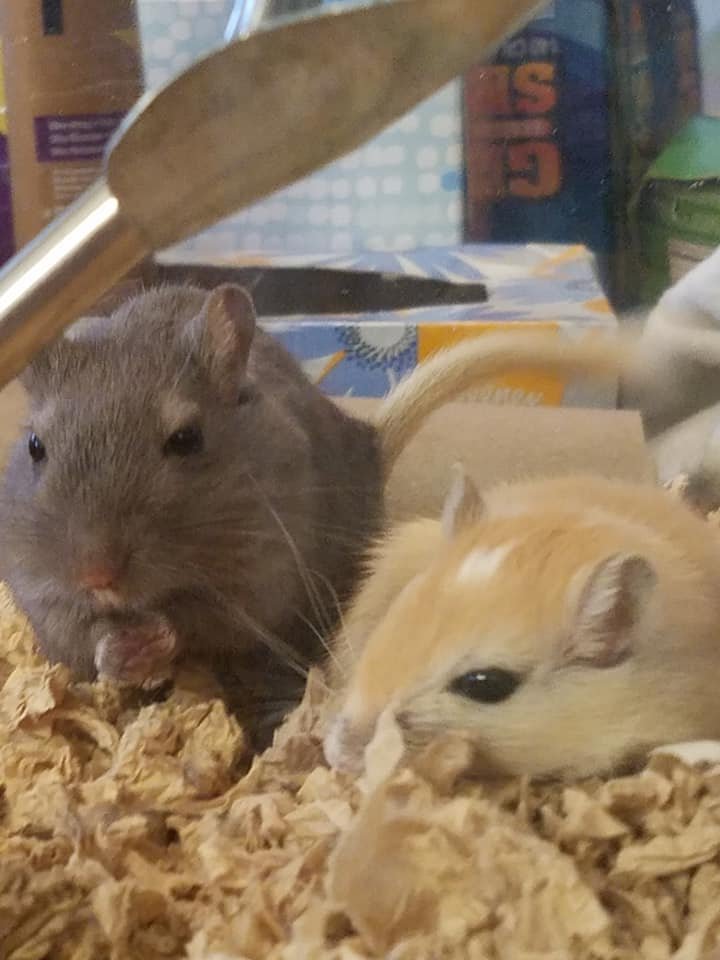
So, what’s the deal with lilac gerbils? Well, these little critters are a stunning variation of the common Mongolian gerbil, boasting a beautiful grayish hue with a hint of lavender. They’re not just adorable; they also have sweet personalities and are relatively easy to care for. Before you get started, though, there are some important things you should know. Let’s dig into this topic and equip you with all the info you need to breed lilac gerbils successfully!
Understanding Gerbil Breeding Basics
Breeding is a big responsibility. It’s not just about letting two gerbils have a playdate. You need to know a few key principles about their biology and breeding cycles. Gerbils typically reach sexual maturity around 10-12 weeks old, and females can breed every 4-6 weeks. Here’s the kicker: a female can give birth to litters of up to 6-8 pups at a time.
You might be wondering, why breed gerbils at all? Breeding can be a fun and rewarding experience. It allows you to create beautiful lilac offspring and learn more about animal husbandry. However, remember that breeding should always be done responsibly. Overpopulation is a real issue; many pets end up in shelters due to unplanned breeding. So, if you plan to breed, ensure you can find good homes for the babies.
Another thing to consider is that genetics can be tricky. Lilac is a specific color mutation, and to get that color in your litter, you need to ensure that both the male and female have the right genetic makeup. This will require some research on the genetics of gerbils, specifically how color breeds appear.
Setting Up the Right Environment
Before you bring a duo of lilac gerbils into your breeding program, you’ll need to set up a comfortable environment. Gerbils are active little creatures and benefit from a spacious habitat where they can play, explore, and dig.
Start with a 60-gallon tank or larger. Unlike hamsters, gerbils love to burrow, so a deep bedding layer is essential. Use natural materials like aspen shavings or paper-based bedding. Avoid cedar or pine, as they can be harmful to their respiratory systems.
Next, include plenty of enrichment. Toys like tunnels, chew sticks, and small houses can help keep them entertained. You might also want to add a wheel, but ensure it’s safe and appropriately sized for gerbils. Plants can also be added for a natural touch, but make sure any plants are safe for gerbils before incorporating them.
Lastly, maintain a consistent temperature. Gerbils thrive best in environments between 65°F and 75°F (18°C – 24°C). Sudden temperature changes can stress them, so keep their habitat away from drafty areas or direct sunlight.
Choosing the Right Breeding Pairs
Choosing your breeding pairs is one of the most crucial steps in the process. You might be excited to just grab a couple of cute lilac gerbils, but there’s more to it than that. Look for healthy individuals from reputable breeders. They should have clear eyes, clean fur, and exhibit natural behaviors.
Once you’ve found two potential mates, you need to consider their genetic background. Breeding gerbils with poor health history or known genetic issues can pass problems onto their offspring. Research their lineage if possible. Some breeders are transparent about genetics, which is a bonus.
Be cautious about inbreeding. While some breeders might think it’s okay to breed siblings, it can cause serious health issues in the offspring. Instead, aim to breed unrelated gerbils to create a healthy genetic pool.
Finally, ensure both gerbils are around the same age. A significant age gap can affect breeding success, as older gerbils may have complications during pregnancy.
Monitoring the Pregnancy and Birth
Once your female lilac gerbil is pregnant, it’s time to take extra care of her. Gestation usually lasts around 24-26 days. During this time, she’s likely to become more reclusive. Provide her with extra bedding material so she can build her nest for the babies.
You might notice some changes in her behavior; she might eat more than usual and become less active. This is perfectly normal. Make sure she has access to fresh food and water at all times. High-quality pellets, seeds, and fresh vegetables are excellent choices for a pregnant gerbil.
When the big day arrives, keep your distance. It’s best to let her handle the birth without interference. Check on her from time to time, but don’t disturb her too much—this could stress her out. After she gives birth, she’ll likely groom and care for her pups.
Don’t be surprised if the litter size varies. Some may have 2 pups, while others could have up to 8 or more. Just keep an eye on them to ensure they’re nursing well and that the mother is taking care of them.
Caring for Newborn Gerbils
Once the pups are born, it’s essential to monitor their growth and health closely. Newborn gerbils are incredibly fragile. For the first few weeks, they rely entirely on their mother for warmth and nutrition. It’s advisable not to handle the pups until they’re about three weeks old.
After this time, you can start handling them gently. This will help them become more accustomed to humans, making them friendlier pets later on. Always wash your hands before handling the pups to keep them safe from potential germs.
You’ll also need to keep their enclosure clean but make sure not to disturb the nesting area too much. Changing the bedding around the mother and her pups can stress her out. Instead, clean the rest of the habitat regularly to maintain a healthy living environment.
As the pups grow, they will start to play and explore. At about 4-5 weeks, they can begin transitioning to solid food. Make sure to provide a balanced diet to help them grow strong and healthy.
Finding Good Homes for Gerbil Pups
Once the pups are ready to leave their mother, it’s time to think about finding them new homes. Ideally, you should place them when they’re around 8 weeks old. At this age, they’re weaned and more independent, ready for the adventure of living with new families.
Word of mouth can be a great tool here. Let friends, family, and co-workers know you have lilac gerbils looking for homes. Social media can also help; you might find local animal groups or forums where people are looking for pets.
When you find homes, take the time to interview potential owners. Ensure they understand the responsibilities of having a gerbil. Remember, you want your little ones to go to families who will love and care for them just as you have.
If you’re unable to find homes, consider reaching out to local shelters or rescue groups. They may have resources or might even help connect you with potential adopters.
Breeding lilac gerbils can be one of the most rewarding experiences for any animal lover. It’s like watching a beautiful story unfold, filled with tiny little twists and turns as you help these creatures grow. From setting up their home to ensuring the health of both parents and pups, every step is an opportunity to learn and cherish the bond you have with these animals.
Remember, with great joy comes great responsibility. Make sure to educate yourself thoroughly before embarking on this journey, and always prioritize the health and well-being of your gerbils. You’ll find that, in return, they offer boundless joy, companionship, and, yes, a splash of color to your life! So, if you’re ready to jump in, you now have a solid foundation. Happy breeding!

